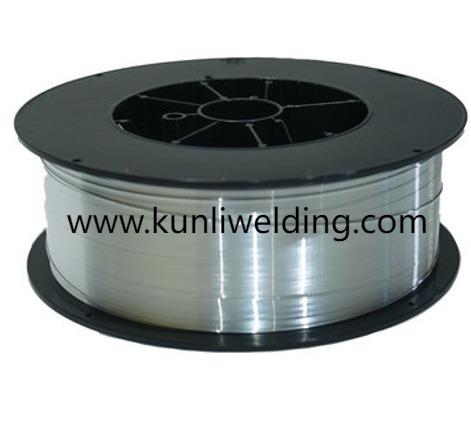Humidity is a quiet variable that shapes welding outcomes more than many teams expect, and Aluminum Mig Wire Manufacturersincreasingly advise buyers to treat moisture control as a core part of quality assurance. In shops and field sites where aluminum welding happens under varying climate conditions, small amounts of surface moisture and adsorbed contaminants on wire can translate into arc instability porosity and extra finishing work that delays deliveries.
When a spool picks up moisture the wire surface oxidizes or traps water under protective films and packaging. Once that wire enters the arc the moisture flashes into gas and becomes bubbles in the weld metal. Those tiny pockets weaken the joint and demand extra grind and repair later. In visible panels and structural parts the repair cost is not only labor it is schedule disruption and sometimes additional inspection steps. That makes humidity control an operational priority from receiving through to the torch.
Ambient humidity also affects feeding behavior. A damp environment encourages wire surface films and can slightly change the friction inside liners and feeders. In automated cells and long feed paths that change shows up as slippage bird nesting or unexpected pauses. Shops that run in humid climates or that have outdoor stations see these effects more often and benefit from routine feed tests and a stricter incoming inspection routine.
Packaging and transport choices matter in broader supply chain conversations. With supply chain reviews and near sourcing appearing on many agendas, procurement teams ask suppliers about how spools are sealed and whether desiccant packs are included. A spool that arrives sealed and dry often goes straight to the line while an open reel from transit that crossed humid hubs needs staging and attention before it is safe to weld. Suppliers who document packing practices and offer sample reels make qualification more reliable and reduce surprises on arrival.
On site handling practices are simple but effective. Store reels in a dry cabinet or sealed bin when not in use. Allow reels that travelled from cold trucks or air conditioned trailers to acclimate before opening to avoid condensation. When a spool is mounted and not used for an extended period reseal or return it to protected storage rather than leaving it exposed. These habits reduce the need to run off long lengths and to reject welds due to hidden porosity.
Weld parameter and technique adjustments help mitigate the impact of marginal conditions. A short run off and visual examination of the bead before critical work prevents bad seams from reaching inspection. Adjustments to travel speed and heat input can sometimes reduce the size of pores if the issue is minor, but they are no substitute for clean wire and disciplined storage. Documented parameter windows and clear procedural steps that include a feed test at shift start make it easier to maintain consistent output across operators and shifts.
Maintenance of feeders and liners complements humidity controls. Clean liners and properly seated drive rolls reduce how much the feeder amplifies minor surface effects. A worn liner or a degraded contact tip can turn a small surface film into a real feed stall. Regular inspection checklists that include a quick feed test and liner condition review at shift change reduce the number of interruptions and preserve welding quality under variable humidity.
Field welding raises additional questions. Outdoor repair work in coastal or tropical regions exposes wire to rapid humidity changes and salt laden air. For field teams insulated transport boxes and sealed spools with desiccant are practical investments. When repairs must occur in the open, prepare a short sheltered staging area to protect the spool during the most sensitive steps of the repair so the job does not require costly rework once the part returns to service.
Procurement choices shape how easily a shop deals with humidity. Ask about sealing methods desiccant inclusion and recommended storage ranges when evaluating vendors. Suppliers who provide handling notes and small sample reels shorten the time to a confident selection and reduce the chance of production delays caused by unanticipated moisture issues. Clear lot marking and consistent winding quality make it easier to trace problems if they do occur.
Market trends make humidity control more visible. As electrification and outdoor infrastructure work expand, welding activity often shifts to environments with higher moisture exposure. At the same time tighter delivery windows and a focus on reducing rework amplify the cost of poor incoming material handling. Teams that tighten storage and handling practices, align supplier packaging choices with shop conditions and maintain routine feeder maintenance turn humidity from a hidden risk into a managed parameter.
Practical steps to start include a short receiving checklist sealed storage for reels a simple acclimation area and a shift level feed test. Pair those with supplier sampling and with documented feed and temperature ranges. These actions reduce porosity risk stabilize feed behavior and protect both aesthetic results and structural integrity. For product details packaging choices and supplier notes that help manage humidity issues see the aluminum wire listings and handling guidance at https://www.kunliwelding.com/product/aluminum-alloy-wire/aluminum-alloy-welding-wire.html .



